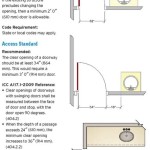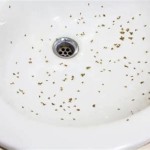Replacing a Bathroom Sink Tap
A dripping tap can be a persistent annoyance and a significant source of water waste. Fortunately, replacing a bathroom sink tap is a manageable DIY project for most homeowners with basic plumbing skills. This article provides a step-by-step guide to help facilitate a successful tap replacement.
Essential Tools and Materials
Before beginning the project, gather the necessary tools and materials to ensure a smooth and efficient process. Having everything readily available will prevent interruptions and potential frustrations.
- Adjustable wrench
- Basin wrench
- Screwdrivers (Phillips and flathead)
- Pliers
- Plumber's putty
- Teflon tape
- New tap
- Bucket
- Old towels or rags
Turning Off the Water Supply
The first crucial step involves shutting off the water supply to the sink. This prevents unexpected water flow during the replacement process and minimizes the risk of water damage. Locate the shut-off valves under the sink and turn them clockwise until they stop. Turn on the tap to confirm the water supply is completely off.
Disconnecting the Old Tap
Disconnecting the old tap requires working in the confined space under the sink. A basin wrench proves invaluable for loosening the nuts that secure the tap to the sink. These nuts are often difficult to reach, and the basin wrench provides the necessary leverage and angle.
- Use the basin wrench to loosen the nuts connecting the water supply lines to the tap.
- Disconnect the P-trap to allow access to the tap's mounting hardware.
- Loosen the nuts securing the tap to the sink from below.
- Remove the old tap.
Cleaning the Sink Surface
Once the old tap is removed, thoroughly clean the sink surface where the new tap will be installed. Remove any old putty, caulk, or debris. A clean surface ensures a proper seal and prevents leaks.
Installing the New Tap
Installing the new tap requires careful attention to the manufacturer's instructions, as different models may have specific requirements. However, the general process remains similar across most standard taps.
- Apply plumber's putty to the base of the new tap.
- Insert the new tap into the sink holes.
- Secure the tap from below with the provided mounting hardware.
- Connect the water supply lines to the tap, using Teflon tape on the threads to prevent leaks.
Connecting the Water Supply Lines
Connecting the water supply lines involves attaching the flexible hoses from the shut-off valves to the corresponding inlets on the new tap. Ensure a tight seal by hand-tightening the nuts, followed by a gentle tightening with an adjustable wrench. Over-tightening can damage the connections.
Testing for Leaks
Once the installation is complete, it is essential to test for leaks. Slowly turn the water supply valves back on, observing carefully for any drips or leaks around the tap base and connections. If leaks are detected, tighten the connections slightly. If the leaks persist, re-evaluate the installation steps and ensure all connections are properly sealed.
Final Adjustments and Considerations
After confirming the absence of leaks, make any necessary final adjustments to the tap's position and handle operation. Ensure the tap swivels smoothly and the handles operate correctly. Consider applying a bead of caulk around the base of the tap where it meets the sink for added protection against water seepage.
- Check handle operation.
- Check tap swivel.
- Apply caulk (optional).
Maintaining Your New Tap
Proper maintenance can extend the lifespan of your new tap and maintain its optimal performance. Regularly cleaning the tap with a mild soap and water solution prevents the buildup of mineral deposits and maintains its shine. Avoid using abrasive cleaners which can damage the finish. Periodically check the connections for any signs of leakage and address them promptly.
- Regular Cleaning.
- Avoid abrasive cleaners.
- Check for leaks.
Different Types of Bathroom Sink Taps
Understanding the different types of bathroom sink taps available can help you choose the right one for your needs and bathroom style. Consider the functionality, aesthetic appeal, and installation requirements of each type.
- Centerset taps: These taps have a single spout and two handles mounted on a single base.
- Widespread taps: These taps have separate spout and handles, providing a more customized look.
- Single-handle taps: These taps offer convenient control of both water flow and temperature with a single lever.
- Wall-mounted taps: These taps offer a modern and minimalist look, with the plumbing concealed within the wall.

How To Easily Replace Basin Taps Step By

How To Replace Bathroom Taps Big

How To Install Basin Taps Replacing A Bathroom Sink Tap
How To Change Bathroom Taps Everything You Need Know

How To Install Basin Taps Replacing A Bathroom Sink Tap

How To Replace A Bathroom Faucet Tinged Blue

Replacing A Bathroom Faucet Fine Homebuilding

Diy How To Replace A Bathroom Sink Faucet Remove Install

Diy How To Replace A Bathroom Sink Faucet Remove Install

Bathroom Faucet Replacement For Beginners Making Maanita
Related Posts







